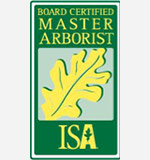Timing Matters: The Best Seasons for Lawn Seeding Success
A beautiful, lush lawn doesn’t happen by chance. It requires careful planning, especially when it comes to seeding. Timing is crucial for lawn seeding success, as it can significantly impact the germination and growth of grass. For homeowners in the Midwest, understanding the best times to seed your lawn can make all the difference between a patchy yard and an uniform,green, vibrant one.
Ryan Lawn & Tree is a leading lawn and landscaping company in the Midwest, specializing in creating and maintaining healthy lawns. With years of experience and expert knowledge, they know precisely when and how to seed for optimal results. This comprehensive guide will explore the best seasons for lawn seeding, providing you with valuable information to achieve a beautiful lawn.
In this article, we’ll discuss the specific timing for seeding cool-season and warm-season grasses, the importance of soil preparation, and essential tips for ensuring your lawn thrives. Whether you are looking to repair bare spots, overseed an existing lawn, or start from scratch, following the right timing and techniques will yield the best results.
With the expertise of Ryan Lawn & Tree, you can master the art of lawn seeding and enjoy a lush, healthy lawn throughout the year. Let’s dive into the best seasons for lawn seeding and discover how timing truly matters for your lawn’s success.
Understanding Cool-Season and Warm-Season Grasses
Before diving into the best times to seed your lawn, it’s essential to understand the differences between cool-season and warm-season grasses. Each type has its unique growth patterns, environmental preferences, and optimal seeding times.
Cool-season grasses thrive in cooler temperatures. They include popular varieties like Kentucky bluegrass, fescue, and ryegrass. These grasses grow best in spring and fall, when temperatures are mild. They stay green throughout the year, although they may turn brown during hot summer months if not properly watered.
Warm-season grasses prefer the heat and flourish during summer. Common types include Bermuda grass, zoysia, and buffalo grass. These grasses grow vigorously during the warmer months and tend to go dormant and brown in cooler seasons.
Knowing whether your lawn has cool-season or warm-season grass will help you determine the best seeding time for maximum success.
Best Time to Seed Cool-Season Grasses
For those in the Midwest, cool-season grasses are a popular choice. The ideal time for seeding these grasses is early fall, between late August and mid-October. Try everything possible to get your seeding done during this time frame. During this period, the soil is still warm from the summer, which promotes faster and more consistent seed germination. Cooler air temperatures, along with fall rains, reduce the stress on new seedlings, allowing them to establish strong root systems before winter.
If you miss the fall window, early spring is another good option. Plant cool-season grass seeds between March and May. Spring seeding allows grass to establish before the heat of summer. However, late spring and summer’s weed competition can be a challenge, so be prepared to manage weeds effectively.
Best Time to Seed Warm-Season Grasses
For lawns featuring warm-season grasses, late spring to early summer offers the best seeding time. Aim to plant these grasses when soil temperatures consistently reach 65 to 70 degrees Fahrenheit. In the Midwest, this period usually extends from mid-May to mid-July. Warm soil encourages quick seed germination and strong growth, giving the grass ample time to establish before cooler weather arrives.
Seeding warm-season grasses too early or too late can result in poor germination or weakened plants that struggle to survive colder temperatures. Ensuring you plant during the optimal time frame is crucial for achieving a healthy, robust lawn.
Preparing Your Soil for Seeding
Regardless of the type of grass or timing, proper soil preparation is critical for successful lawn seeding. Begin by testing your soil to determine its pH level and nutrient content. Aim for a pH between 6.0 and 7.0, ideal for most grass types. Adjust the pH with lime or sulfur as needed, based on soil test results.
Next, clear the area of any debris, rocks, or existing vegetation. Use a tiller to loosen the top 6 to 8 inches of soil, which improves root penetration and allows new grass to establish firmly. Incorporate organic matter or compost into the soil to enhance its fertility and drainage. The first sentence is ok, but in my 30 years of doing this, I have never ever told anyone to get a tiller, nonetheless to go 6 to 8 inches deep? I don’t think that is realistic in our soils
Level the surface with a rake, aiming for a smooth, even seedbed. This makes it easier for seeds to make good contact with the soil, which is necessary for germination.
Proper Seeding Techniques
Once the soil is prepared, it’s time to seed your lawn. Follow these steps for effective seeding:
1. Choose Quality Seeds: Select high-quality grass seeds suited for your region and lawn conditions. Look for varieties resistant to common pests and diseases. Look on the seed tag for weed free seed and 0% other crop seed.
2. Spread the Seeds: Use a broadcast or drop spreader to distribute seeds evenly across the prepared soil. Follow the recommended seeding rate on the seed package for optimal coverage.
3. Cover the Seeds: Lightly rake the soil to cover the seeds with a thin layer of soil. This protects them from birds and helps retain moisture. You can rent a verticutter and utilize this tool to incorporate the seeds into soil as well.
4. Water Thoroughly: Water the seeded area immediately after planting to ensure the soil is moist. Continue watering lightly and frequently to keep the top inch of soil consistently damp for 3 weeks without ever letting it dry out.. Avoid heavy watering that can wash away seeds.
Post-Seeding Lawn Care
Careful attention to post-seeding lawn care can make or break your efforts. Follow these guidelines for optimal results:
1. Moisture Management: Continue watering lightly and frequently until the grass reaches about 2 inches tall. Gradually reduce the watering frequency while increasing the duration to encourage deeper root growth.
2. Weed Control: Applying a light layer of mulch or straw can help suppress weed growth while retaining soil moisture Take out the first sentence – We dont recommend that at all. That will turn into Wheat coming up in their yard the next spring. . Avoid using herbicides until the new grass is well-established, typically after the first mowing.2 mowings.
3. Mowing: Once the grass reaches 3 to 4 inches in height, mow it to about 2 to 3 inches. Make sure your mower blade is sharp to avoid damaging the tender grass. If possible, bag the first cutting of your new grass.
Seasonal Lawn Maintenance
Maintaining your lawn year-round ensures that it remains healthy and vibrant. Adjust your lawn care practices to suit the changing seasons:
– Spring: Remove winter debris, aerate the soil, and apply a balanced fertilizer to support new growth.
– Summer: Water deeply and infrequently to promote deep roots. Mow regularly and at the proper height to keep your lawn healthy and prevent stress.
– Fall: Overseed thin areas, fertilize to prepare for winter, and rake leaves to prevent them from smothering the grass.
– Winter: Avoid heavy foot traffic on the lawn and clear any snow or ice to protect the grass from damage.
Benefits of Proper Timing
Understanding and following the optimal seeding times for your grass type offers several benefits:
1. Higher Germination Rates: Seeding at the right time increases the chances of seed germination and establishment. Warm soil temperatures and adequate moisture contribute to better seed-to-soil contact and faster germination.
2. Reduced Weed Competition: Seeding during the optimal window helps your grass establish more quickly, reducing competition from weeds. Healthy grass outcompetes weeds, leading to a denser, more weed-resistant lawn.
3. Stronger Root Systems: Proper timing allows new grass to develop robust root systems before facing extreme temperatures. Strong roots anchor the plants, making them more resilient to drought, pests, and diseases.
4. Improved Lawn Appearance: A well-seeded lawn is thicker, lusher, and more uniform in appearance. Proper timing and techniques result in a healthier, greener lawn that enhances your property’s curb appeal.
Choosing the Right Grass Seed
Selecting the right grass seed is pivotal for your lawn’s success. The choice depends on several factors, including your region’s climate, soil type, and the lawn’s intended use. In the Midwest, common choices are Kentucky bluegrass, fescue, and ryegrass for cool-season lawns, and Bermuda grass, zoysia, and buffalo grass for warm-season lawns.
When buying grass seeds, look for packages that have high purity and germination rates. The label should indicate the seed’s species, variety, and the percentage of weed seeds. Opt for certified seed, as it ensures genetic purity and high performance. Consider using a seed mix that combines several grass types, providing better lawn resilience and adaptability.
Understanding Over-Seeding and Reseeding
Over-seeding and reseeding are effective strategies to improve your lawn’s density and appearance. Over-seeding involves spreading seed over an existing lawn to fill in thin areas and enhance its overall resilience. This practice is especially beneficial in the fall for cool-season grasses, as it allows new grass to establish before winter.
Before over-seeding, mow the existing lawn short and remove any debris. Aerate the soil to reduce compaction and improve seed-to-soil contact. Spread the seeds evenly using a broadcast spreader and water lightly but frequently until the new grass establishes.
Reseeding is necessary for areas with extensive bare spots or damaged grass. The process is similar to initial seeding but often requires more intensive soil preparation. Remove dead grass, loosen the soil, and amend it with compost before planting new seeds. Follow similar watering and post-seeding care practices to ensure successful germination and growth.
Aeration: A Crucial Step
Aeration is a critical lawn care practice that complements seeding efforts. It involves perforating the soil with small holes to allow air, water, and nutrients to penetrate deep into the root zone. Aeration reduces soil compaction, enhances root development, and increases the uptake of essential nutrients.
The best time to aerate depends on your grass type. For cool-season grasses, aerate in early fall or spring, when the grass is actively growing. For warm-season grasses, late spring to early summer is ideal. Use a core aerator for the best results, as it removes small soil plugs and leaves them on the lawn to decompose naturally.
After aeration, it’s an excellent opportunity to overseed and apply a thin layer of top-dressing, such as compost. These practices further enhance the soil’s fertility and promote new grass growth.
Fertilizing Your Lawn
Fertilization is essential for a lush, green lawn. It supplies the nutrients needed for vigorous growth and resilience against pests, diseases, and environmental stresses. Understanding the right type and timing of fertilization is key to optimal lawn health.
Different grasses have varying nutrient requirements. Cool-season grasses benefit from nitrogen-rich fertilizers applied in early fall and late spring. These applications support root development and foliage density. Warm-season grasses, on the other hand, require fertilization in late spring and summer, when they are actively growing.
Always follow the manufacturer’s recommendations for application rates and timing. Over-fertilizing can harm your lawn and contribute to environmental issues, such as nutrient runoff. Use slow-release fertilizers for a steady supply of nutrients, and consider a soil test to identify specific nutrient deficiencies.
Irrigation Best Practices
Proper irrigation is vital for seed germination and overall lawn health. New seedlings require consistent moisture to establish strong roots and growth. Adjust your watering practices based on the season, weather, and grass type.
Immediately after seeding, water the lawn lightly and frequently to keep the soil consistently moist. Avoid heavy watering, as it can wash away seeds and cause waterlogging. Once the grass is established, switch to deeper, less frequent watering to encourage deep root growth.
For cool-season grasses, water early in the morning to reduce evaporation and fungal risks. Warm-season grasses can tolerate higher temperatures and may require more frequent irrigation during peak summer months. Using a soaker hose or sprinkler system helps ensure even water distribution across your lawn.
Weed and Pest Management
Weeds and pests can significantly impact your lawn’s health and appearance. Effective management practices are crucial for maintaining a vibrant, weed-free lawn. Start with preventative measures, such as proper mowing, watering, and fertilization, to create a healthy environment where grass outcompetes weeds.
Hand-pull weeds or use a selective herbicide that targets unwanted plants without harming your grass. Apply pre-emergent herbicides in early spring to prevent weed seeds from germinating. Be cautious with herbicide use near newly seeded areas, as it can inhibit grass growth.
Pest management involves monitoring for common culprits, such as grubs, insects, and fungal diseases. Use integrated pest management (IPM) strategies, combining cultural, biological, and chemical controls. For example, beneficial nematodes can help control grubs, while proper irrigation and mowing reduce the risk of fungal infections.
Lawn Mowing Tips
Mowing your lawn correctly helps maintain its health and appearance. Follow these tips to ensure you mow effectively:
1. Mow at the Right Height: Keep cool-season grasses at a height of 2.5 to 4 inches and warm-season grasses at 1 to 3 inches. Taller grass shades the soil, reducing evaporation and preventing weed seeds from germinating.
2. Keep Your Mower Blade Sharp: A dull blade tears the grass, leading to ragged edges and increased vulnerability to diseases. Sharpen your mower blade regularly for clean cuts.
3. Follow the One-Third Rule: Never remove more than one-third of the grass blade in a single mowing session. Cutting too short stresses the grass and weakens its growth.
4. Leave Grass Clippings: Grass clippings decompose quickly and provide valuable nutrients back to the soil. Use a mulching mower to finely chop the clippings and distribute them evenly.
5. Mow in Different Directions: Change your mowing direction each time to prevent soil compaction and create an even growth pattern.
Addressing Common Lawn Problems
Healthy lawns sometimes face issues that require attention. Address common problems promptly to prevent minor issues from becoming significant challenges.
– Thatch Buildup: Thatch is a layer of dead grass and organic matter that accumulates between the grass and soil. Excessive thatch prevents water, air, and nutrients from reaching the roots. Dethatch your lawn using a dethatching rake or machine to remove this layer.
– Soil Compaction: Compacted soil restricts root growth and water infiltration. Address soil compaction with regular aeration and avoid heavy foot traffic on wet soil.
– Disease and Fungus: Monitor your lawn for signs of disease, such as discolored patches or fungal growth. Treat affected areas with appropriate fungicides and improve lawn conditions to reduce disease risk.
– Bare Spots: Bare spots can result from heavy foot traffic, pests, or disease. Reseed these areas and address the underlying causes to prevent recurrence.
Sustainable Lawn Care Practices
Incorporating sustainable lawn care practices benefits the environment and promotes a healthy lawn. Here are some eco-friendly tips:
– Water Wisely: Use rain sensors and timers to avoid over-watering, and collect rainwater for irrigation. Water deeply and infrequently to promote deep root growth.
– Compost and Mulch: Compost yard waste and kitchen scraps to create nutrient-rich soil amendments. Mulching leaves and grass clippings enriches the soil and reduces waste.
– Reduce Lawn Size: Consider incorporating native plants, ground covers, and permeable hardscaping to reduce the amount of turfgrass. These alternatives require less water, fertilizer, and maintenance, promoting biodiversity and sustainability.
Addressing Shady Lawn Areas
Grass needs sunlight to grow well, but not all parts of your lawn may receive enough light. Shade from trees, buildings, or other structures can make it difficult for grass to thrive. To address these shady areas, choose shade-tolerant grass species. Fine fescue and certain types of ryegrass and bluegrass can handle low-light conditions better than others.
Prepare the soil in shady areas by aerating and adding organic matter for better moisture retention and root growth. Remove any dense leaf cover and prune tree branches to allow more light penetration. Water these areas carefully, as shaded grass needs less moisture than grass in full sun.
Consider using ground covers or mulching heavily shaded areas if growing grass proves too challenging. These alternatives add beauty and reduce maintenance.
Managing Lawn Traffic
Heavy foot traffic can compact soil and wear down grass, especially around walkways, play areas, and patios. To manage high-traffic zones, spread the usage to minimize stress on specific areas. Installing stepping stones or paths can help guide foot traffic and protect vulnerable grass.
For areas experiencing constant wear, consider planting more resilient grass varieties like Kentucky bluegrass or Bermuda grass. These types bounce back more quickly from damage. Maintain these areas with proper aeration, and overseeding to keep the grass healthy.
Using lawn furniture pads or movable outdoor furniture can also help distribute weight more evenly and reduce soil compaction. Regularly check for compaction signs and treat them promptly to keep your lawn in top condition.
Dealing With Lawn Pests
Lawn pests can cause significant damage if not controlled early. Common pests include grubs, chinch bugs, and sod webworms. Look for signs like brown patches, thinning grass, or birds feeding on your lawn. These can indicate pest presence.
Creating a Lawn Maintenance Schedule
A well-planned lawn maintenance schedule helps ensure consistent care throughout the year. Break down tasks by season to tackle specific lawn needs:
Water Conservation in Lawn Care
Water conservation is increasingly important in lawn care, particularly during periods of drought. Implementing water-efficient practices saves resources and keeps your lawn healthy.
1. Use Native Grass Species: Native grasses are adapted to local conditions and require less water. Choose drought-resistant varieties that can thrive with minimal irrigation.
2. Irrigate Wisely: Water your lawn early in the morning to reduce evaporation losses. Use a rain gauge to measure rainfall and adjust irrigation accordingly. Avoid over-watering, which can lead to shallow roots and increased disease risk.
3. Install Efficient Irrigation Systems: Drip irrigation and soaker hoses deliver water directly to the root zone with minimal waste. Consider using smart controllers that adjust watering schedules based on weather conditions and soil moisture levels.
4. Mulch and Top-Dress: Apply a thin layer of organic mulch or top-dressing to help retain soil moisture and reduce evaporation. This practice also improves soil health and overall lawn resilience.
The Importance of Soil Aeration
Aerating your soil is a key component of lawn care. This process involves creating small holes in the soil to allow air, water, and nutrients to reach the grass roots. Aeration relieves soil compaction, which can hinder grass growth and health.
Aerate your lawn at least once a year, more frequently for areas with heavy foot traffic. Use a core aerator for best results as it removes small plugs of soil. Fall is an ideal time for aeration in cool-season lawns, while late spring to early summer works best for warm-season varieties.
Post-aeration, leave the soil plugs on the surface to decompose naturally. They break down and integrate back into the soil, contributing to its health. Combine aeration with overseeding and top-dressing to enhance your lawn’s vitality and appearance.
Achieving a Beautiful and Healthy Lawn
Taking care of your lawn involves various steps, from selecting the right grass seed to implementing sustainable practices. By following guidelines on seeding, watering, fertilizing, and pest management, you can create a lush, resilient lawn that enhances your outdoor space. Proper maintenance through mowing, aeration, and seasonal care ensures your grass remains healthy and vibrant year-round. Addressing challenges like shade, traffic, and soil health further contributes to a thriving lawn.
With attention to detail and commitment to regular care, you can transform your lawn into a beautiful, functional area that provides enjoyment for you and your family. A well-maintained lawn adds significant value to your home and creates a welcoming environment.
Ready to take your lawn to the next level? Contact Ryan Lawn & Tree today to learn how we can assist you in achieving the lawn of your dreams. Let our experts handle the complexities of lawn care while you enjoy the beauty and benefits of a well-maintained lawn. Schedule a consultation and discover the difference professional lawn care services can make.









